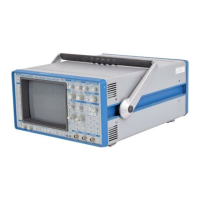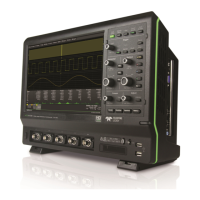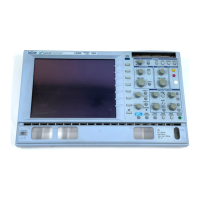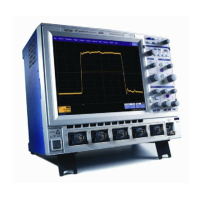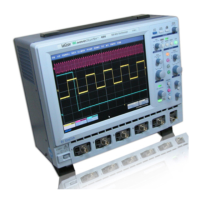FEATURES
High bandwidth and precision - Two independent
channels, each with 175 MHz bandwidth and a high-
performance 8-bit ADC, handle input signals with
better than +_2% DC accuracy (.-_1% optional). The
9400A features sampling rates of 100 megasamples/
sec for transient events. Long memories and a
versatile cursor system (including voltage, time and
cross-hair cursors), give time measurements with an
accuracy of__0.02% of the time-base setting, and reso-
lution of _+0.002% full scale.
High-resolution display- The 9400A’s large display
screen produces bright, stable, razor-sharp pictures of
your signal under any repetition rate conditions. Very
accurate signal comparisons are possible as up to four
waveforms (live, expanded or processed) can be dis-
played simultaneously on the high-resolution screen
(1024 x 1024 pixels).
Long memories- The long 32K acquisition memories
of the 9400A Digital Oscilloscope capture waveforms
with high fidelity. At similar time-base settings, the
9400A’s long memories allow sampling rates up to 25
times faster than that of instruments which have only
1K of acquisition memory (see graph below). Faster
sampling rates ensure higher single-shot bandwidth
as well as significantly reducing problems caused by
undersampling and aliasing. The 9400A’s long memo-
ries allow displayed waveforms to be expanded up to
100 times to show the finest signal details.
Transient recording - With a sampling rate of 100
megasamples/sec, the 9400A is an extremely powerful
transient recorder. Long 32K data point acquisition
memories, combined with a continuously adjustable
trigger (from 100% pre-trigger to 10,000 divisions
post-trigger at any time-base setting), ensure that rare
events cannot be missed. Both channels are sampled
simultaneously so that exact time correlation is main-
tained between channels.
Full programmability - All the 9400A’s front-panel
controls are fully programmable via the two RS-232-C
interface ports or the GPIB port. A single push-button
initiates a screen dump for accurate color hard copies
of the display via a wide range of digital plotters. The
GPIB comes complete with LeCroy "MASP" software
offering computer control and mass storage on any PC
compatible with the IBM
®
standard.
Signal processing - The waveform processing op-
tions extend the applications of the 9400A to high
bandwidth signal characterization, as well as mathe-
matical and spectral analysis. The routines include
averaging (summed and continuous), smoothing, inte-
gration, differentiation, square, square-root, full
arithmetic, FFT spectral analysis, and Extrema moni-
toring.
Mass storage and remote control - A sophisticated
mass storage and remote control package is available
to assist users involved in automated and computer-
aided testing. Convenient portability for field applica-
tions is also provided by a lap-top computer.
100
50
l0 -
5 -
0.5 --
SINGLE-SHOT BANDWIDTH (NYQUIST FREQUENCY)
\
\
\
\
\
\
\
\
Vs. TIME BASE SETTING
\
\
\
1On 50n lO0n
SOOn Ip 5p 10FI 50H
\
\
\
\
\
\
\
%. "¯
\
TIME BASE SETTING
(sec/div )
Single-shot bandwidth is a function of sampling rate. Long memories enable higher sampling rates at equal time-base settings. Above, the 9400A
(solid line) is compared to oscilloscopes with 1K (dotted line) and 512 points (dashed line) of memory. At slower time-base settings, the single-shot
bandwidth of the 9400A, expressed as Nyquist frequency, is typically 25 times higher than in oscilloscopes with 1K memory and 50 times higher than
in those with only 512 points.
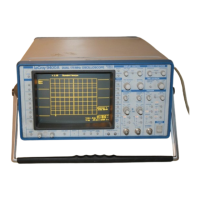
